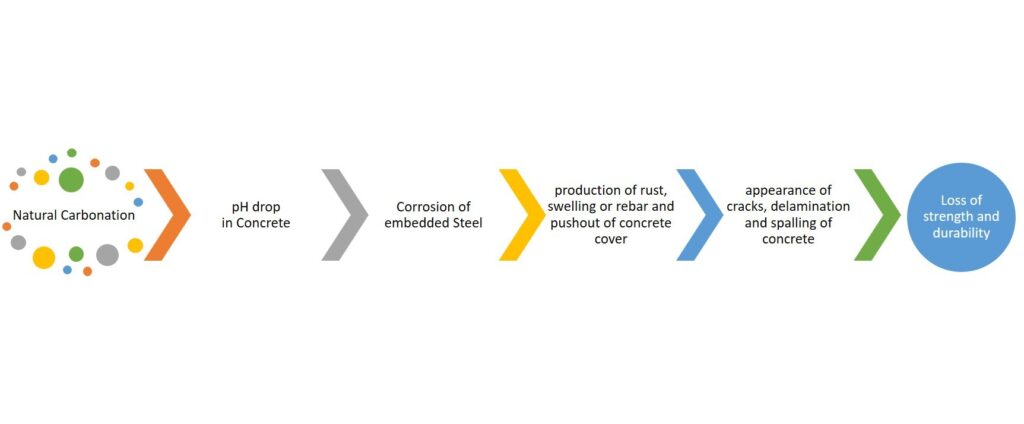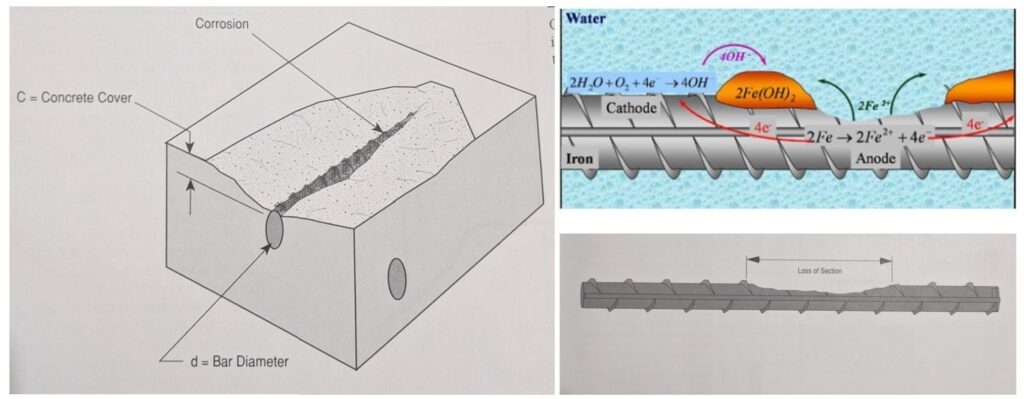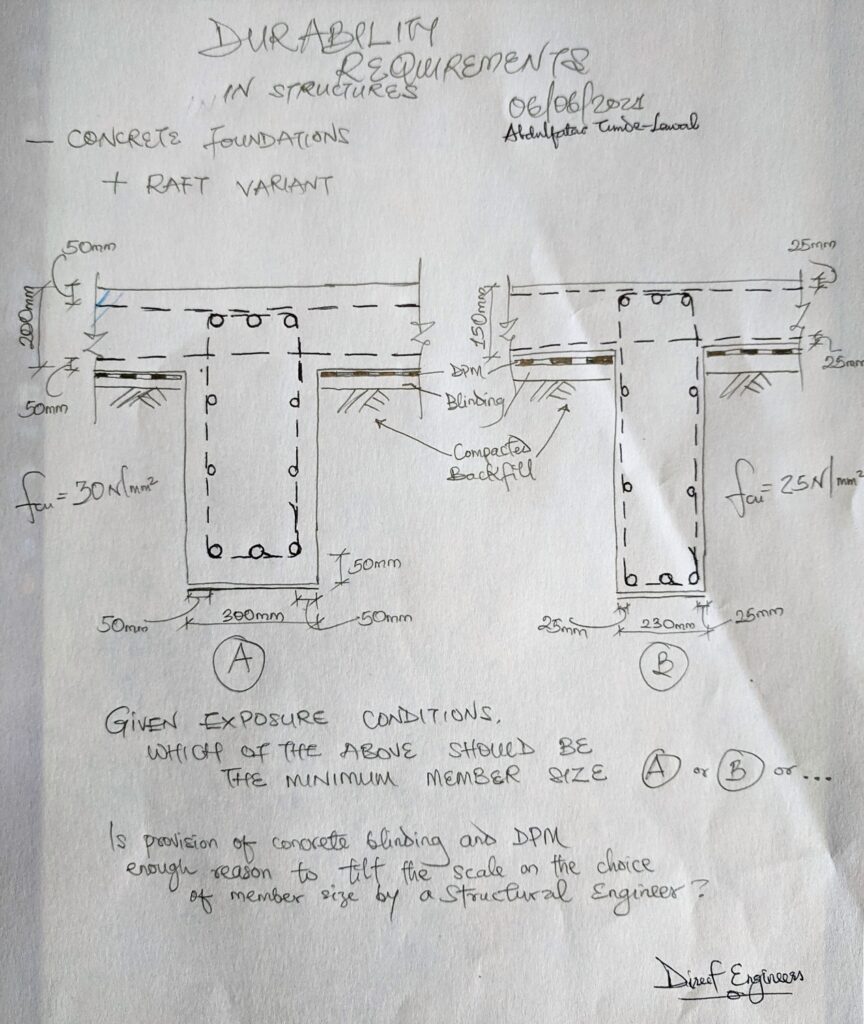Shall we have this discussion? Are our buildings now being built for short-term use (temporary use) or still for long term use (permanent)? This question applies a lot to the wave of residential buildings springing up at a massive scale across the property landscape in Nigeria and Lagos in particular (based on the author’s personal exposure).
In all fairness no structure or building is truly permanent as with all things on earth, degradation (oxidation and all its brotherly -sions/-tions) will take its toll on them and they ultimately will fall into a state of disrepair, out of taste/fashion or impacted by natural disaster.
Durability Requirements In Structures

The buildings of old within the Lagos metropolis built perhaps with what can be said to be with lean resources albeit concerted effort and diligent workmanship/professionalism appear to continue to stand the test of time when compared with the new builds.
Is it a case of the greater the knowledge, the lesser the quality of implementation and reduction in level of professionalism?
A structure is only as good as its robustness in the face of adversity (exposure conditions).
In Nigeria, almost all standard residential buildings are built using concrete reinforced or unreinforced as a component of its foundational structure. For substructures (foundations) of reinforced concrete build, (steel) reinforcement is placed within the concrete to serve particular purposes of flexure (strength) and crack control (durability). For either of these purposes, the steel reinforcement which comes in different sizes specified by diameter (commonly 8mm, 10mm, 12mm, 16mm, 20mm, 25mm, 32mm etc) is expected to serve its designated function per its particular strength. The diameter amongst other technical properties are determinants of the strength of steel.

Let us quickly dash to our elementary chemistry, to remind ourselves of some principles – Steel is an alloy of Iron and carbon. Unprotected Steel rusts in the presence of abundant moisture and air. Rust-ing is a term used to refer to the corrosion of steel. Corrosion is a natural process that converts a refined metal into a more chemically stable form such as oxide, hydroxide, carbonate or sulfide. It is the gradual destruction of materials (usually a metal) by chemical and/or electrochemical reaction with their environment.
In an in-depth study and understanding of concrete, we see that it is alkalinity in pH of concrete that primarily provides chemical protection to steel embedded within it against corrosion. The grade (strength) and thickness of concrete cover combine to provide protective buffers against aggressive elements. The weaker the strength (grade) of the concrete, the smaller the concrete cover, the lesser the level of protection the concrete can provide to the embedded reinforcing steel.
Degradation of a reinforced concrete element follows a process which once initiated and past a threshold, the pace of progression becomes hard to break. This process is typically-

- Natural carbonation of concrete (the grade (strength) of concrete determines the rate this natural and inevitable phenomenon progresses)
- Carbonation leads to drop in alkalinity (pH) of concrete
- In the presence of moisture and air, corrosion of embedded steel begins, rust is produced which causes expansion of concrete thereby causing cracks.
- Cracks increase the rate of moisture ingress and air access to the steel hastening the corrosion process. It also increases the rate of pH drop of the concrete leading it to become acidic.
- Corrosion of steel produces rust at a faster rate and thereby leads eventually to delamination and spalling of concrete.
Rust which is produced is not from thin air, it is actually sections of the steel that is converted to rust and the result is a loss in the cross-sectional area of the steel (aka, the diameter reduces). This can spell two outcomes depending on the purpose the steel is serving (remember either flexural or crack) –
- the capacity of the member is reduced /compromised (in order words it won’t be as strong as before)
- the concrete is susceptible to further cracking increasing the need for maintenance.

Seeing from the foregoing how naturally progressive this process is and how batons are exchanged seamlessly once the process starts, design specifications and construction trends become worrisome.
It appears some engineers have been able to form a pact with corrosion and perhaps this informs decision to have a concrete cover lesser than the code requirements to their embedded steel reinforcement.

Provisions in codes and standards serve as guides that generally tell you the professional – Once you are able to do this, you are covered to a large extent and your decision will be able to cater for even things you are perhaps unable to account for in the midst of limited information and computations.
However, if you choose to go at tangents to code provisions, are you able to substantiate your design decisions from scientific positions rather than emotional nuances?
Let us use the analogy of a riot police man with a bulletproof vest, face shield in short full riot gear to a regular police man without riot gear but both in the same riot scene, which of them is better prepared to face the situation?

Why build only for the now, if at all you have the funds to build? and why is this a recurring decimal in the areas of Lagos noted not only to be cyclically inundated with floods (high ground water level) seasonally but also acclaimed to be the reserve of the wealthy, and educated.
Conclusion
Longterm durability and reduced need of maintenance of a permanent structure is as important as its immediate strength and visual appeal upon completion. BS 8500-1 and BS EN 206-1 amongst others are available to guide provisions and aid for the professional.
Summarily, what many consider as an expensive design and construction process is what draws the line between a structurally durable and resilient structure and its structurally less durable neighbor next plot. You decide what you want to spend your money on.
We shall talk someday to the quality of our roads and public infrastructure, the hard-to-swallow consistent need to keep repairing/patching on perhaps an annual or semi-annual basis and the new fad in town – Concrete roads (Rigid pavement).
It thus is a no-brainer that in our current times and in the continuous onslaught the construction industry is facing that the need of a sound Structural Engineer is more than ever needed by a client to evaluate and advice on the quality of build and durability of a structure/building prior to making decision to purchase or not. Either this or the engagement of the same Structural Engineer down the line for structural retrofit /repair works recommendation and supervision.
For my fellow Civil Structural Engineers, what is your take on the image below, let us engage.

References –
- https://www.designingbuildings.co.uk/wiki/Permanent_structure
- https://en.wikipedia.org/wiki/Corrosion
- https://www.cement.org/learn/concrete-technology/durability/corrosion-of-embedded-materials
- Concrete Repair and Maintenance Illustrated by Peter H. Emmons
